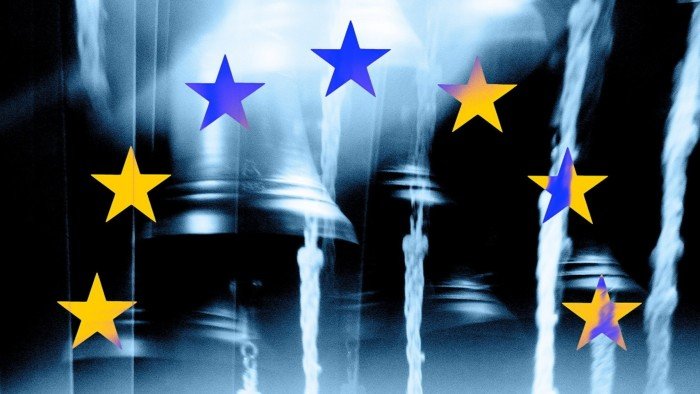Latest news on ETFs
Visit our ETF Hub to find out more and to explore our in-depth data and comparison tools
The recent approval of semi-transparent exchange traded funds in Europe has sparked debate over whether the fund structure will succeed in Europe despite its unpopularity in the US.
In December, the Commission de Surveillance du Secteur Financier, Luxembourg’s financial regulator, cleared the way for active ETFs to adopt the type of semi-transparent, portfolio shielding structures that have long been permitted in the US, and a swath of asset managers are believed to be looking at launching such funds.
These structures mean an ETF does not have to publish its full portfolio every day, a scenario some active managers fear allows other market participants to front run them and steal their “secret sauce”. Instead, the CSSF will permit ETF issuers to disclose their holdings as little as once a month, with a one-month lag.
The Central Bank of Ireland, the regulator of Europe’s largest ETF domicile and Luxembourg’s chief rival, is widely expected to follow suit, perhaps as early as this month. It declined to comment for this story.
Non-transparent ETFs already operate in the US, where they were approved in 2019 with the first listings in 2020.
To date they have not really taken off, with just 41 such ETFs in operation — a number that has not risen since 2023 — accounting for 2.3 per cent of all active ETFs, according to data from Morningstar. Their combined $14.4bn of assets represent just 1.5 per cent of the $955bn held by all US-listed active ETFs.
Some believe opening the door to semi-transparent ETFs in Europe could widen the type of funds available to investors. At present, the small but growing European active ETF market is dominated by funds that differ little from their underlying benchmarks, alongside funds that use derivatives to reduce market risk.
More traditional risk-taking active fund managers have largely held back from launching ETFs. Allowing them to adopt a level of portfolio transparency more in line with norms in the mutual fund industry might persuade some to do so.
“Having flexibility regarding portfolio transparency could encourage additional managers to launch ETFs and broaden the types of products that are available,” said Nick King, head of ETF at Dutch fund manager Robeco.
“For more concentrated, perhaps less liquid strategies, protecting intellectual property can make sense. I definitely think you have comfort from more managers if they are able to protect their IP.”
Tara O’Reilly, partner and co-head of asset management and investment funds at law firm Arthur Cox, also saw the appeal of partial portfolio transparency for some investment strategies.
“There are lots of people who are very comfortable with transparency, and are not concerned from a front-running perspective. But even where active managers are getting comfortable, they have strategies in reserve that they won’t consider until they get portfolio transparency changes,” she said.
In part, semi-transparent ETFs’ slow progress in the US is due to regulations limiting the non-transparent option to ETFs investing purely in US securities, suggesting there might be a wider appetite for the approach if it was more widely available.
For King, the danger of fully transparent active ETFs being front run by the likes of hedge funds is not a major concern: although an observer is able to see that an ETF is increasing or decreasing its stake in a given stock, it could not know whether that buying or selling was still ongoing or had been completed.
Instead, he feared the effective theft of Robeco’s intellectual property.
“In a high active strategy an institutional investor might say ‘why should I buy your ETF? Theoretically I can just buy your holdings’,” King said.
In addition, if an ETF is a share class of a pre-existing mutual fund, adopting semi-transparency would ensure a mutually consistent disclosure policy.
Andrew Jamieson, global head of ETF product at Citi, said one factor behind the lack of traction in the US is that regulators have approved a series of competing semi-transparent models.
In contrast, “if you had a pan-European model, a standardised model across every jurisdiction, I can definitely see the traditional active managers who haven’t pivoted to ETFs so far would definitely think this is a good route to market”.
O’Reilly called for European regulators go further still. Luxembourg has only approved semi-transparency for actively managed funds, with passive, index-tracking funds not deemed in need of such protection, but she believed some passive funds would also benefit from shielding their portfolio from the market.
The non-transparent structures operating in the US had not led to wider trading spreads, O’Reilly said, suggesting that the arbitrage mechanism that keeps the prices of ETF largely in line with the value of their holdings was still functioning properly.
Given this, she said “if you believe [semi-transparency] is an approach that means the effective arbitrage mechanism continues, why would you restrict it only to active funds?
“We would hope it would be available to all types of ETFs,” O’Reilly added, suggesting it might be welcomed by passive funds that hold small baskets of securities.
However, Kenneth Lamont, principal of research at Morningstar, did not believe take-up would be particularly high.
“[Approval] has been expected for some time, but if you take the US as a precedent, the uptake of these strategies has been very low and the enthusiasm from the market has been very low as well,” he said.
“I suspect that once you have started with transparency, investors don’t want to move back to semi-transparency. It seems to be the way the market has evolved.”

